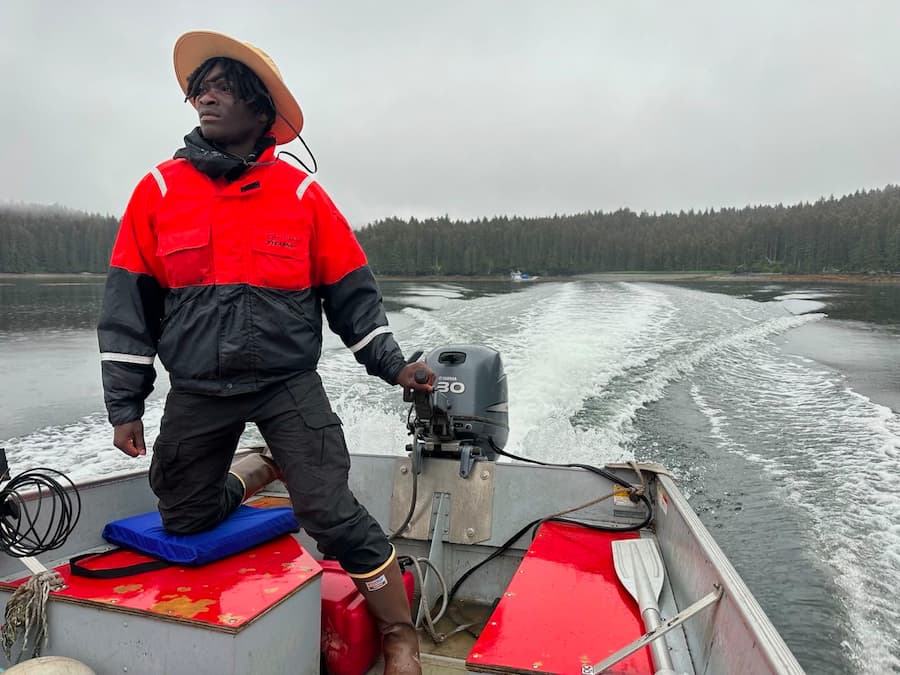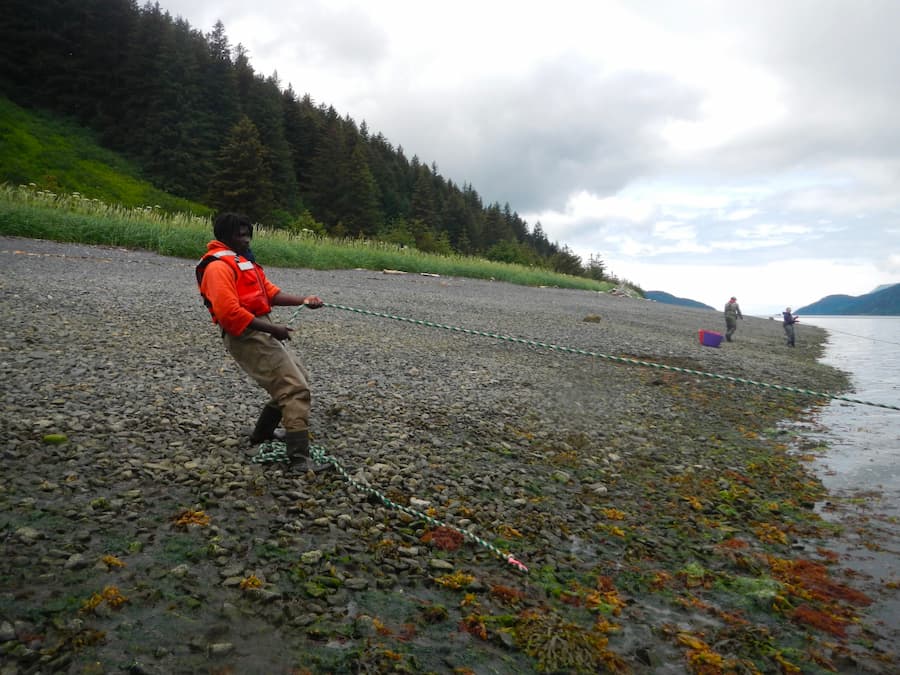TreVaughn Ellis’s Research Sheds Light on Elusive Arctic Lamprey
 TreVaughn Ellis in Alaska.
TreVaughn Ellis in Alaska.
As a NOAA Hollings scholar, TreVaughn Ellis (BS biology ’24) is working in Alaska this summer, investigating gaps in our scientific understanding of the Arctic lamprey (Lethententeron camtschaticum), a primitive jawless fish that has been an important part of the natural balance in the Arctic region for millions of years. Understanding the lamprey’s health and habits is critical for effective conservation and management of regional ecosystems.
Ellis is working for NOAA’s National Marine Fisheries Service with a mentor, Marine Habitat Research Biologist Katharine Miller. It’s all part of his NOAA Hollings scholarship, a highly selective two-year scholarship that gives interns an opportunity to do research in NOAA laboratories across the United States. As part of the scholarship, Ellis has traveled to Emmonak, a village on Alaska’s Yukon River, to collect samples of Arctic lamprey smolts (juvenile fish that are migrating out to sea for the first time). Ellis is analyzing the samples at Auke Bay Laboratory in Juneau, AK.
“The Arctic lampreys are ecologically important, and their contribution as a biological buffer and habitat builder for salmon are critical to dynamics on the Yukon,” Ellis says. “Research on the lampreys, especially during the juvenile stages, is limited. The smolts are hard to access, and my mentor’s project gives me an opportunity to study them up close.”
Environmental Factors and Health, Food Chains
and Predators
 Collecting samples.
Collecting samples.
The project harvests lamprey smolts from three large tributaries of the Yukon River, beginning in early spring as the winter ice begins to thaw, and continuing until the end of July. The team is analyzing data from both lamprey smolts and adults, to determine the relationships between the fishes’ health (abundance and size) and environmental factors (temperature and volume of water moving downstream).
To learn more about the fish’s diet, habitat, and environmental conditions, the researchers are dissecting the fish to investigate the nature of endoparasite infection (when parasites live inside a fish’s body, causing harm).
They are also using “isotopic analysis,” which involves measuring isotopes in the lamprey tissue to learn more about the fish’s diet and place in the food chain (trophic positioning). “Isotopic analysis and trophic positioning give us an idea of what level these fish are feeding in their environments. This is important for understanding their lifecycle and preferences for predation,” Ellis explains. “Understanding the food web allows fisheries and policy makers to better regulate fishing and protection.”
We Are All Connected to the Ocean
The research is ongoing, but so far, it has already de-mystified some of the unknowns about the Arctic lamprey and their behavior. The team has discovered that the isotope analysis for the adult lamprey is four times higher than that of the juveniles. “This is indicative that the adults are feeding at a higher trophic level than the juveniles,” says Ellis, “meaning that the smolts are not eating fish on their migration out to sea. My research with parasites also showed that they are acquiring them from the fish they eat, and not the other way around.”
Ellis, who is also a UDALL scholar, says that the experience has been incredibly rewarding so far. “I feel lucky to have been able to conduct my own research in such a beautiful and unique setting. It was surreal to wake up and be actively living out the dreams I had as a kid to be a marine scientist. We are all connected to the ocean, and there is still so much to be known about it,” he says. “My work starts to address gaps in knowledge and opens doors to further investigations that improve the health of our ocean.”
